Pasta Bolognese
- By Jennifer Segal
- Updated January 19, 2025
- 887 Comments
- Leave a Review

This post may contain affiliate links. Read my full disclosure policy.
Few dishes are as comforting and satisfying as a hearty bowl of pasta Bolognese. With layers of rich, savory flavor, it’s a dish that never disappoints.
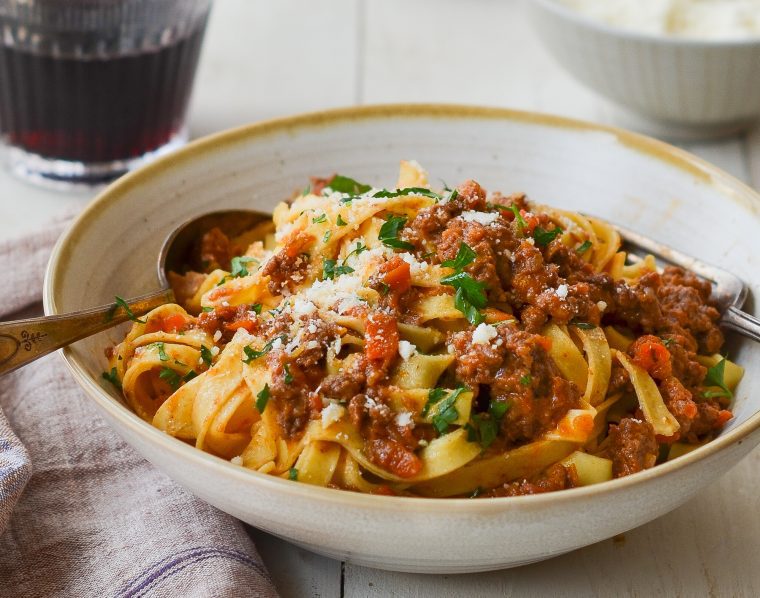
Pasta Bolognese is a classic Italian dish that hails from Bologna, and it’s a Sunday night staple in my house—perfect for cozy family dinners. As the sauce simmers away, filling the house with its rich aroma, it’s only a matter of time before the sharks start circling the kitchen, asking, “When’s dinner?”
Unlike a typical meat sauce that leans heavily on tomatoes, ragù alla Bolognese (Bolognese sauce) develops its deep, complex flavor from pancetta, plenty of veggies, broth, wine, and a touch of milk. It’s traditionally served with wide, flat noodles like tagliatelle or fettuccine, which hold the sauce beautifully. But it’s also fantastic layered into lasagna or spooned over your favorite pasta shape. For an extra special touch, try making homemade pasta or pick up some fresh noodles from the store—it’s an easy way to take this dish up a notch.
“My whole family loves this sauce. It’s rich and full of flavor and so easy for weekday or weekend.”
What You’ll Need To Make Pasta Bolognese
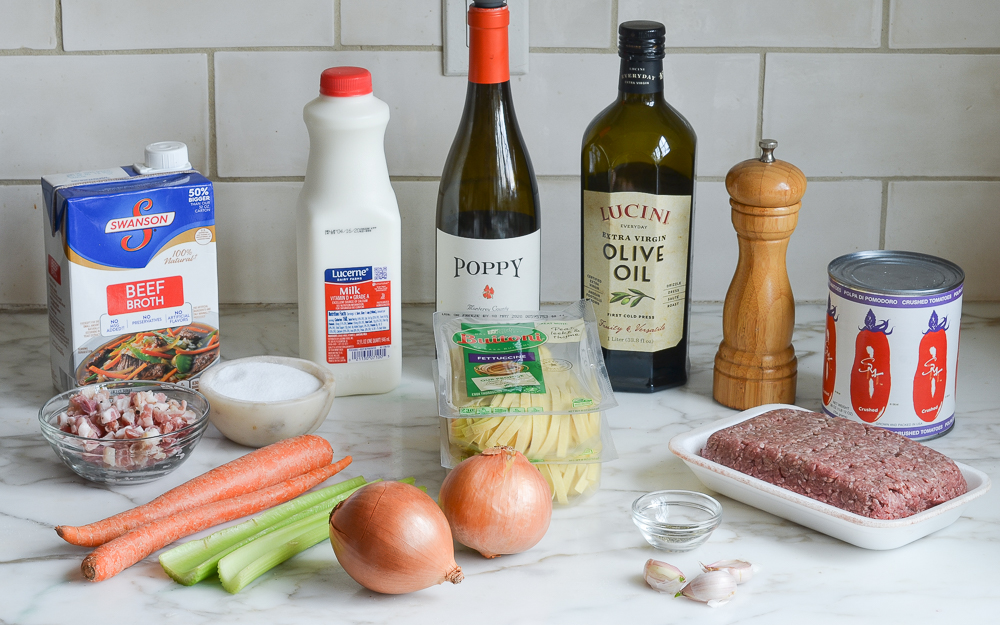
- Onions, Carrots, Celery, Garlic: Form the flavor base of the sauce.
- Ground Beef: The heart of the sauce—bringing richness, texture, and that classic meaty flavor.
- Pancetta: This Italian bacon adds a rich, meaty flavor to the sauce. Unlike American bacon, it’s cured with salt and spices and then dried, not smoked. You can usually find it in the deli section or pre-cut in the refrigerated gourmet foods aisle—perfect for saving time.
- Red Wine: A good dry red, like Chianti, Barolo, or Sangiovese, adds acidity and depth to the sauce—and pairs perfectly with the finished dish. But really, any dry red you enjoy, such as Pinot Noir, Merlot, or Cabernet Sauvignon, will work. Just skip the supermarket cooking wine; it’s loaded with salt and additives.
- Beef Broth: Provides additional meaty flavor and richness, while also adding moisture.
- Canned Crushed Tomatoes: Forms the tomato base of the sauce, contributing sweetness and tanginess; it also thickens the sauce.
- Whole Milk: Softens the acidity from the tomatoes and wine while adding a creamy richness.
- Pasta: The classic pasta choice is tagliatelle, a wide, flat egg noodle that holds the sauce well. Other traditional options include pappardelle and fettuccine, but any pasta shape will work! Fresh or homemade pasta is especially delicious—and it cooks faster than dried pasta.
- Oregano and Basil: Herbs that add aromatic freshness to the sauce.
- Jump to the printable recipe for precise measurements
Step-by-Step Instructions
Start by chopping the veggies—I like to use a food processor to make things quick and easy. First, add the onions to the bowl and pulse until they’re finely chopped but not puréed. Scoop them into a bowl, then toss the carrots, celery, and garlic into the processor and pulse until finely chopped. Alternatively, you can chop everything by hand.


Heat the olive oil in a large, heavy pot over medium-high heat, then add the onion and veggie mixture. Cook, stirring often, until everything is soft, about 8 minutes. If the veggies start to brown too quickly, just lower the heat a bit.

Add the ground beef, pancetta, salt and pepper.
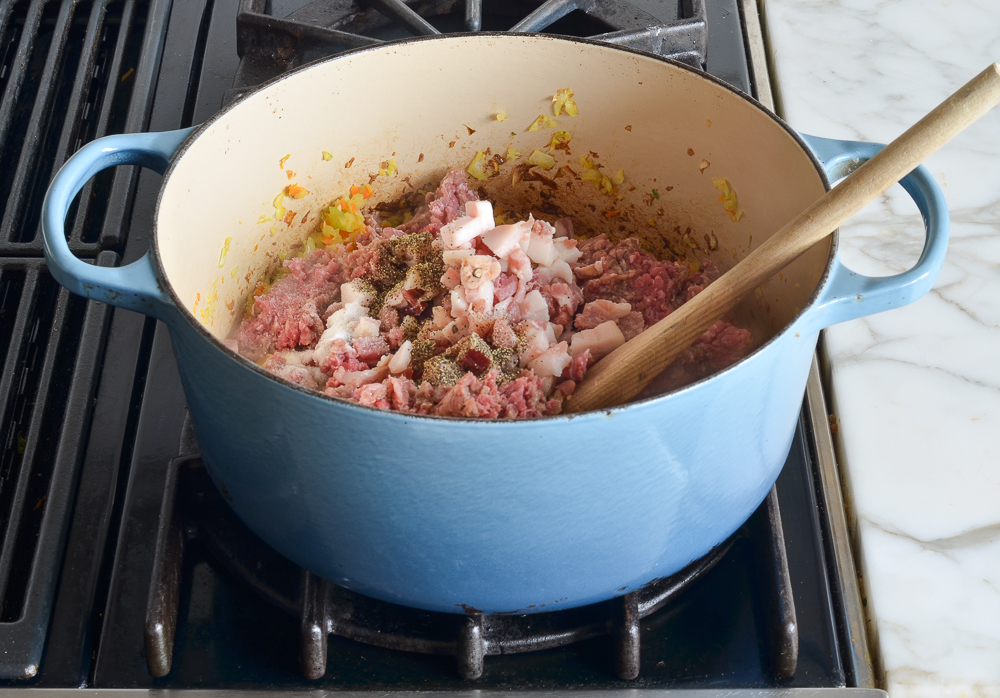
Cook over medium-high heat, stirring and breaking up meat with a wooden spoon, until meat is no longer pink, 5 to 10 minutes.

Add red wine and cook until almost evaporated, then stir in the broth, crushed tomatoes, and oregano.
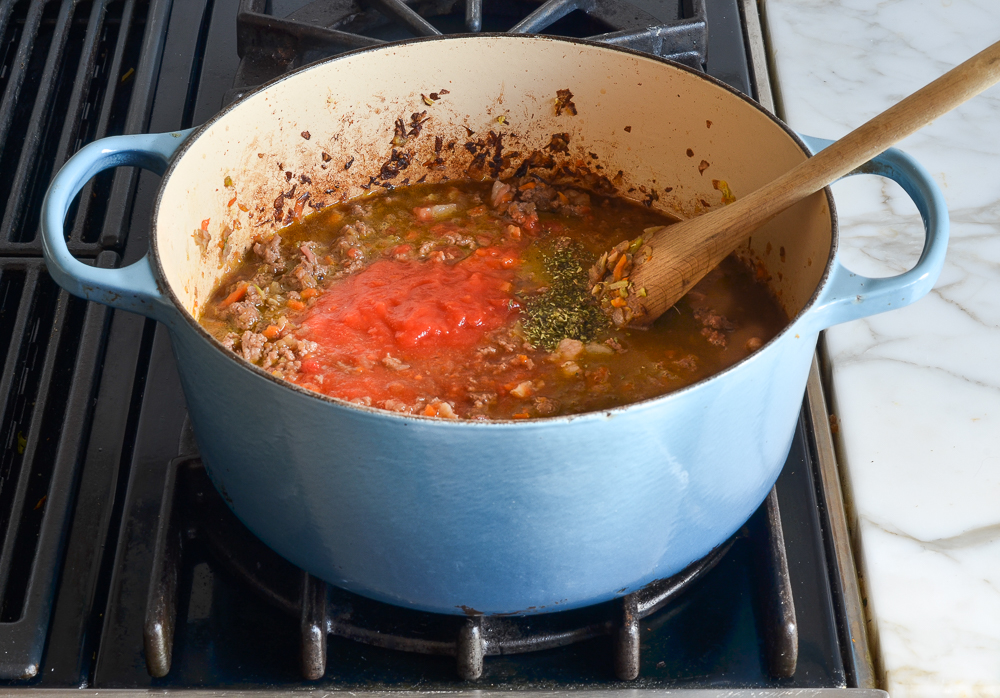
Bring the mixture to a gentle boil, then turn the heat down to low. Cover the pot with the lid slightly ajar and let it simmer for about 1 hour and 30 minutes. After that, stir in the milk and let it all come together.
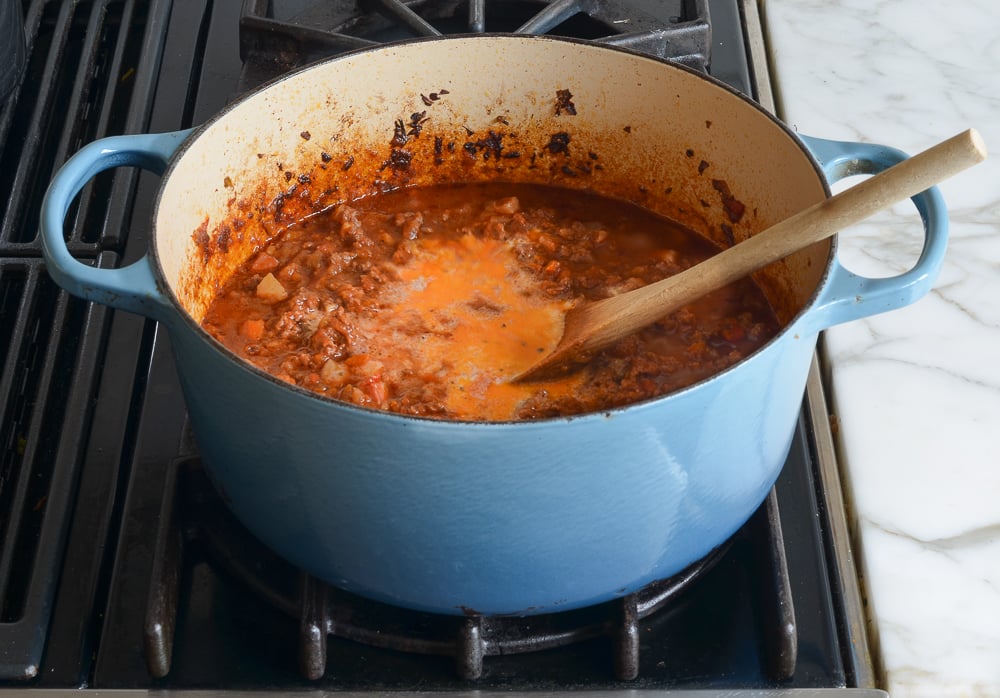
Simmer until milk is absorbed, about 35 minutes. If the sauce looks greasy, use a soup spoon to skim the fat off of the top. Bolognese sauce can be made up to 3 days ahead of time or frozen for up to 3 months.
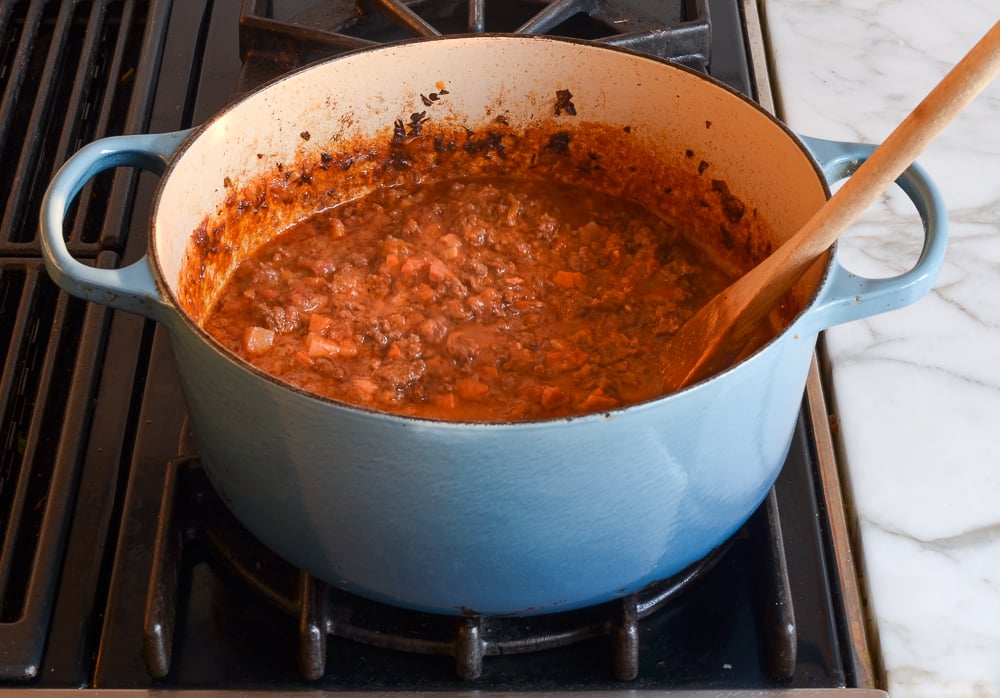
When you’re ready to serve, cook the pasta according to the package instructions.
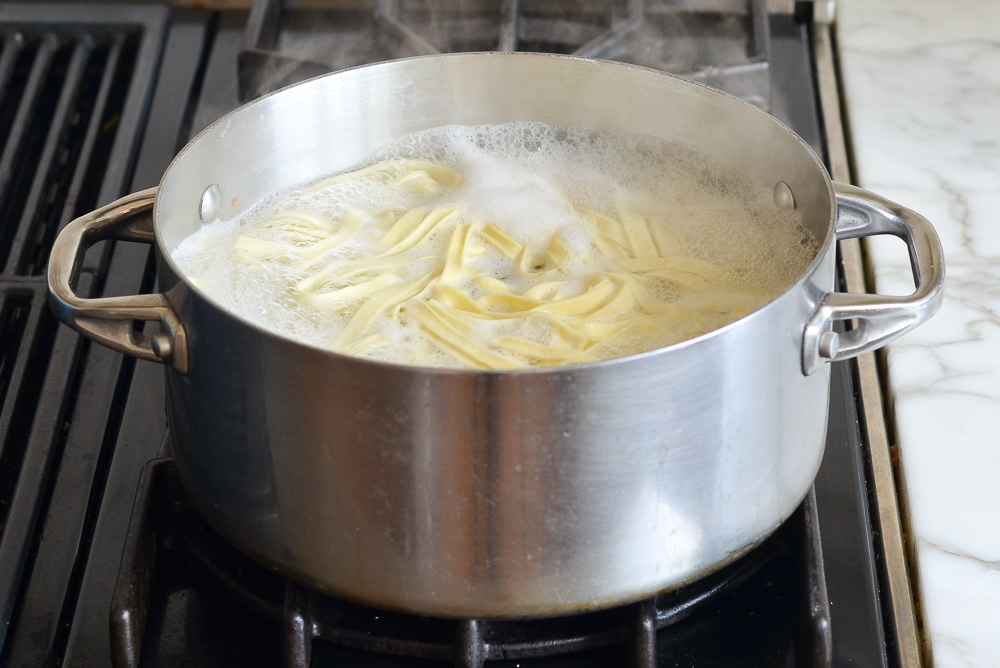
Drain the noodles, reserving 1 cup of the pasta water. Toss the pasta with the sauce, adding the reserved pasta water little by little if the pasta seems dry. Divide the pasta into serving bowls and pass the grated Parmesan cheese at the table.
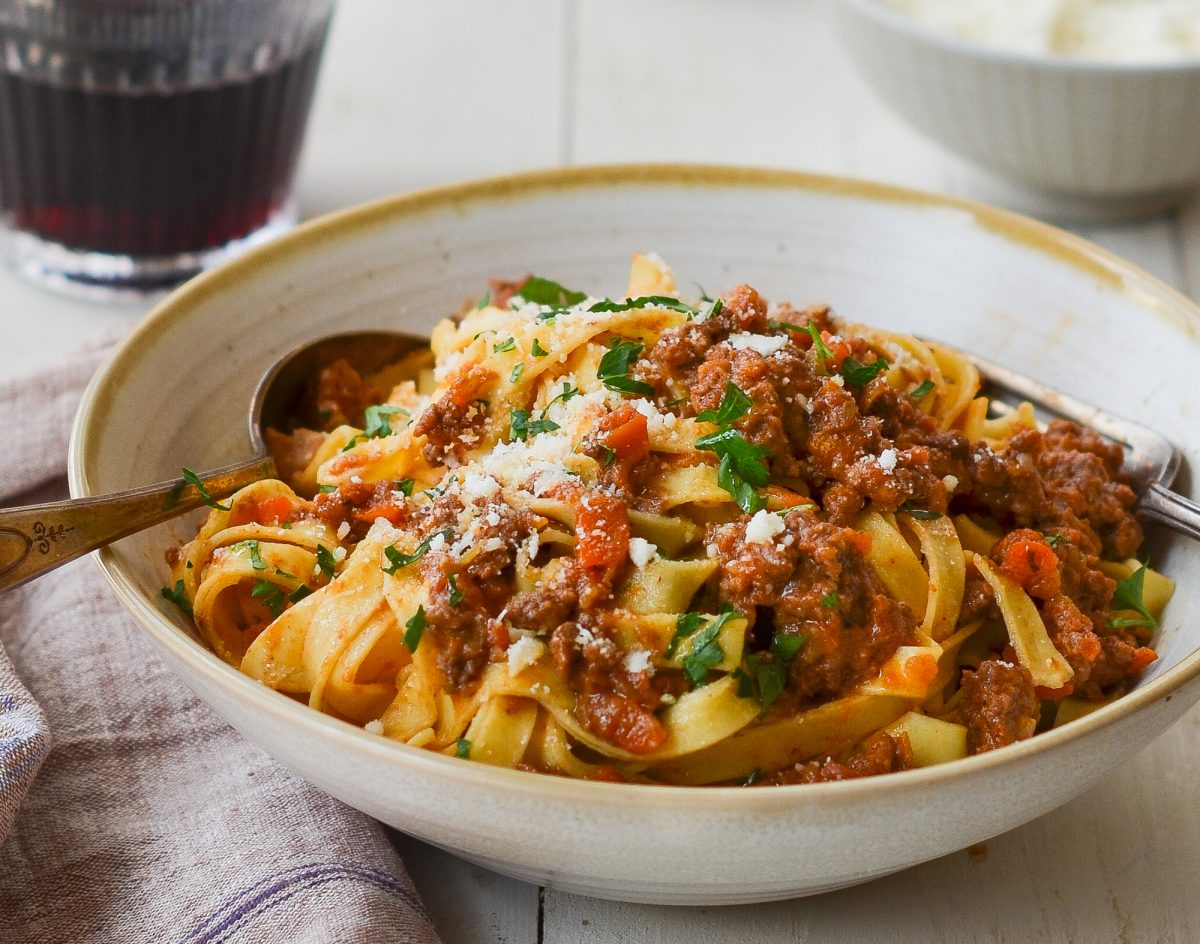
You May Also Like
Pasta Bolognese

This pasta Bolognese recipe is your ticket to a cozy, satisfying meal that the whole family will love.
Ingredients
- 2 medium yellow onions, peeled and chopped into 1-inch chunks
- 2 carrots, peeled and chopped into 1-inch chunks
- 2 celery stalks, cut into 1-inch chunks
- 3 cloves garlic, very roughly chopped
- 2 tablespoons extra-virgin olive oil
- 1⅓ pounds ground beef (85% lean)
- 4 ounces pancetta, finely diced
- 1 teaspoon salt (plus more for pasta water)
- ½ teaspoon freshly ground black pepper
- ½ cup dry red wine
- 2 cups beef broth
- 1 (14-oz) can crushed tomatoes (about 1¾ cups)
- ½ teaspoon dried oregano
- 1 cup whole milk
- 1 pound pasta, for serving
- Handful chopped fresh basil or parsley, for serving (optional)
- Freshly grated Parmigiano-Reggiano, for serving (optional)
Instructions
- Place the onions in the bowl of a food processor fitted with the metal blade. Pulse until very finely chopped but not puréed. Transfer the onions to a separate bowl, then add the carrots, celery, and garlic to the food processor. Pulse until finely chopped.
- Heat the oil in a large heavy pot or Dutch oven over medium-high heat. Add the finely chopped onions and vegetable mixture and cook, stirring frequently, until soft, 8 to 10 minutes. Lower the heat if the vegetables start to brown.
- Add the ground beef, pancetta, salt, and pepper and cook over medium-high heat, breaking up the meat with a wooden spoon, until the meat is no longer pink, 5 to 10 minutes.
- Add the wine and cook until it is almost evaporated, 1 to 2 minutes.
- Add the broth, crushed tomatoes and oregano. Bring to a gentle boil, then reduce heat to low. Cover with the lid slightly ajar and simmer for 1 hour and 30 minutes.
- Add the milk to the sauce and stir to combine. Cover with the lid slightly ajar and simmer until the milk is absorbed and the meat is tender, about 35 minutes. If the sauce looks greasy, use a soup spoon to skim the fat off of the top. Remove the pan from the heat and cover to keep warm while you make the pasta.
- Bring a large pot of salted water to a boil. Cook the pasta according to package instructions. Before straining, ladle out 1 cup of the pasta water into a bowl or measuring cup and set aside. Drain the pasta, then add to the sauce. Toss with tongs, adding the reserved pasta water little by little if the pasta seems dry. Taste and adjust seasoning with salt and pepper if necessary. Divide the pasta into serving bowls and sprinkle with fresh herbs, if using. Pass the grated Parmigiano Reggiano at the table.
- Note: I like the Buitoni brand of fresh pasta sold in the refrigerator case at most supermarkets for this recipe. It cooks quickly and tastes great. (But don't worry if you can't find it; any pasta will work well.)
- Make-Ahead Instructions: The sauce can be made up to 3 days ahead of time. Let it cool to room temperature and then store in a covered container in the refrigerator. Reheat over medium-low heat on the stovetop before serving.
- Freezer-Friendly Instructions: The sauce can be frozen for up to 3 months. Thaw in the refrigerator overnight and reheat in the microwave or on the stovetop until hot.
Pair with
Nutrition Information
Powered by ![]()
- Per serving (6 servings)
- Calories: 717
- Fat: 30 g
- Saturated fat: 10 g
- Carbohydrates: 71 g
- Sugar: 10 g
- Fiber: 5 g
- Protein: 36 g
- Sodium: 910 mg
- Cholesterol: 85 mg
This website is written and produced for informational purposes only. I am not a certified nutritionist and the nutritional data on this site has not been evaluated or approved by a nutritionist or the Food and Drug Administration. Nutritional information is offered as a courtesy and should not be construed as a guarantee. The data is calculated through an online nutritional calculator, Edamam.com. Although I do my best to provide accurate nutritional information, these figures should be considered estimates only. Varying factors such as product types or brands purchased, natural fluctuations in fresh produce, and the way ingredients are processed change the effective nutritional information in any given recipe. Furthermore, different online calculators provide different results depending on their own nutrition fact sources and algorithms. To obtain the most accurate nutritional information in a given recipe, you should calculate the nutritional information with the actual ingredients used in your recipe, using your preferred nutrition calculator.
See more recipes:
Comments
Add a Comment Cancel reply
This site uses Akismet to reduce spam. Learn how your comment data is processed.
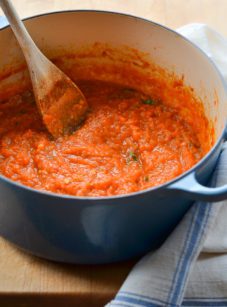
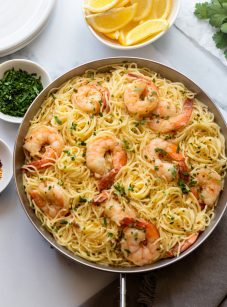
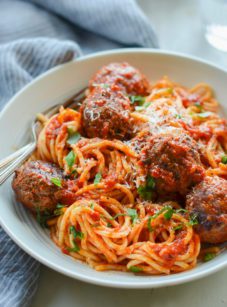
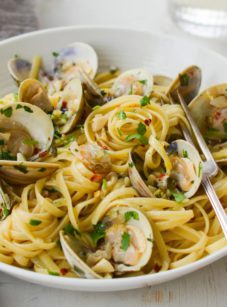
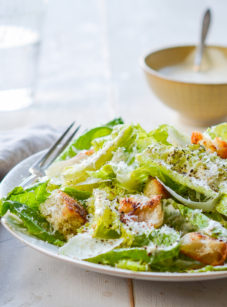
You list two different simmering times: an hour and a half at first, then, 35 more minutes once you add the milk. If I have the time, can I simmer for longer, such as a few hours? Thank you!!
Hi Alicia, that should be fine, but you just want to be careful not to let too much of the liquid evaporate. Depending on how much longer you may want to simmer it, you may want to fully cover the pot. Enjoy!
A little different to my regular sauce, excellent and easier. Will definitely make again.
So good! And easier to make than I thought it would be. Thanks for another great recipe!
This sauce looks delicious! Do you think it would adapt at all well to the slow cooker if I browned the meat first and any idea of a good setting for that if so? I’d love to have this hot and ready when we come home some evening!
Hi MF, While I think you could make it in a slow cooker, there are several steps that involve adding an ingredient and simmering which would be difficult if you plan to leave the house, so I think you’re better off doing this on the stove.
Hi
Quick question about the amount of tomatoes. The recipe states 14 ounce can but the ingredient photo shows a large can of tomatoes. Which one please?
Thanks
Hi Chris, Sorry for any confusion — the 14 oz can is correct. (I was probably planning on using the remainder of the tomatoes in that pic for something else.) Hope you enjoy the sauce!
The fragrance was so tasteful even through preparing. Whole family could not wait until the sauce was ready. At the wery end I added a little of lime zest. Sauce was so delicious with freshly made pasta.
Thank you!
It was an excellent sauce but I found that it lacked depth in it’s flavor. So next time I added 3 T. of Tomato paste part way into the onion, carrot and celery cook.
I love most of Jenn’s recipes but, for this one, I agree with Cindy Rotermund. I followed the recipe exactly. Definitely lacks depth. I will try adding some mushrooms or miso powder as suggested.
I have made this recipe a few times now and just realized I have never left a review. This is one of my all time favorite meals, period! It is sooo delicious. I have made a different bolognese recipe before that I enjoyed, but this one easily takes the cake. The consistency and flavor are perfect to me. This time I doubled the recipe so I could freeze some portions for when I have a hankering or want an easy meal. I think I mistakenly chopped my veggies a little too fine in the food processor as it was quite more watery than I expected. Just gave it a little longer to simmer with the lid off until it reached the consistency I wanted. Also made fresh homemade pasta to go with it. Out of this world! *chef’s kiss*
I enjoyed your review and others but your review plus freezing options has really inspired me to make this!
Thanks.
Rick
Tacoma WA.
This was delicious. Due to a late start, I did not cook for as long, or add the milk. I look forward to making it following all the steps, should be even better.
Can I substitute 2% Milk for Whole Milk?
I like this best with whole milk, but you can get away with 2%.